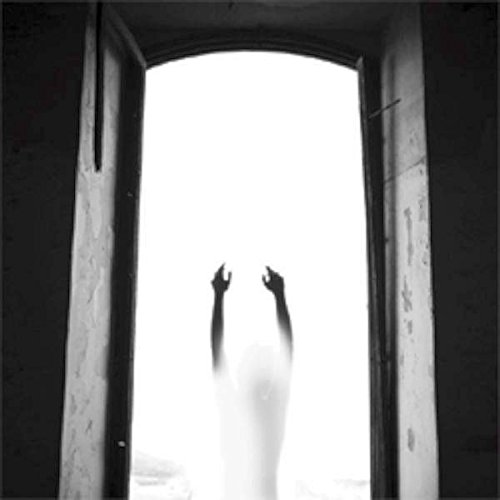
Illum Sphere
The Ghosts of Then & Now
Release Date: Feb 11, 2014
Genre(s): Electronic, House, Experimental Ambient, Left-Field House
Record label: Ninja Tune
Music Critic Score
How the Music Critic Score works
Album Review: The Ghosts of Then & Now by Illum Sphere
Great, Based on 8 Critics
Based on rating 8/10
Head here to submit your own review of this album. Up to this point, Illum Sphere's trajectory contains some pretty notable plot points. There's the establishment of Manchester based club night Hoya:Hoya in 2008, with resident DJs that include Lone, Éclair Fifi, Krystal Klear and Jon K. Connected with that is his notably perpendicular approach to Djing, which draws from a wide and restless palate, to thought-provoking and booty-shaking effect.
Based on rating 4
Manchester producer Ryan Hunn, aka Illum Sphere, has gained quite a reputation over the past few years as someone at the forefront of progressive UK electronic music. Firstly with his esteemed Manchester club night Hoya:Hoya and then with a string of diverse and impressive releases on some of the UK’s best electronic labels including 3024, Tectonic and Young Turks, Hunn has certainly made a name for himself. Indeed, Illum Sphere’s burgeoning reputation reached Thom Yorke of Radiohead, a confirmed supporter who enlisted him to rework a track on Radiohead’s The King Of Limbs remix LP in 2011.
Based on rating 7.3/10
As a DJ who co-founded the well-connected Hoya:Hoya club night in Manchester, Ryan Hunn is eager to let us know that his first full-length Illum Sphere LP is "deliberately and uncompromisingly conceived as a full length record," not a beat mix with its time gone wonky. He needn't worry: No one would mistake Ghosts of Then and Now for a shot at dance floor domination. These 13 tracks are relentlessly eclectic, intricately detailed, and filled with sprung rhythms.
Based on rating 7/10
Listening to Ryan Hunn’s debut full-length as Illum Sphere I can’t help but nod my head in recognition of the many recognizable influences spawning from the iconic Ninja Tune label. I would even claim that Ghosts of Then and Now is the definitive Ninja Tune album, sprinkled with the aesthetic notes of the label’s founders, Jonathan More and Matt Black, collectively known as Coldcut, as well as works by Bonobo, the Cinematic Orchestra, Skalpel and the like. As I’m listening to the album, “Near the End” appears to be the most exemplary of the pieces befitting that style.
Based on rating 3.5/5
You may remember Illum Sphere as one of the up-and-coming producers featured on Radiohead’s ‘King Of Limbs’ remix album in 2011 – he added one of his beat-laden, psychedelic washes to their track ‘Codex’. Three years later, he’s still making sure you won’t forget him. ‘Ghosts…’ winds together techno and house, garage and jungle, hip-hop and Brazilian rhythms, reflecting the colourful sonic palette of Illum’s trailblazing Manchester club night Hoya:Hoya, but filtered through a crackling record player instead of a club soundsystem.
Based on rating 7/10
Having made his name with his HOYA:HOYA night in Manchester and graduated to releasing EPs on the likes of Young Turks, Fat City and Martyn’s 3024, via a remix for Radiohead’s TKOL RMX1234567, Ryan Hunn AKA Illum Sphere has taken the next logical step for any self-respecting off-beat electronic producer and become the newest member of the Ninja Tune family. The striking thing about Ghosts of Then and Now is just how mature and accomplished it is for a debut album. Swaying between leftfield techno and R’n’B infused chill-out, it ebbs and flows in the space between sleep and consciousness, stylistically varied but always anchored around a rich and textured base.
Based on rating 7/10
Although it's only been eight years since Burial released his first LP, his brand of haunted R&B-tinged atmosphere has infiltrated the underground, influencing newcomers like Holy Other and oOoOO as well as recent material from Caribou and Four Tet. With Ghosts of Then and Now, Ryan Hunn (a.k.a. Illum Sphere) draws from this same murky pool of dense sonic influences.
Opinion: Fairly Good
Ryan Hunn’s 2012 single ‘H808er’ is a curious beast. For the first few minutes it fulfils the promise of its title, thundering along in peaktime techno mode. But at the halfway mark the yammering synths fall away to be replaced by twinkly rhodes and looped layers of the producer’s own bedroom croon. It’s almost as if two half-finished tracks have been spliced together on the fly, and the effect is not exactly pleasing.

